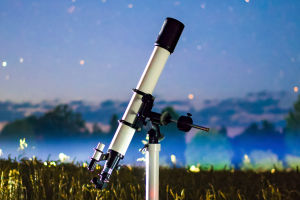Hello Lykkers! Artificial satellites have become an integral part of modern life, serving a wide variety of purposes in fields ranging from communication to weather forecasting.
These man-made objects orbit the Earth and provide services that enhance both our daily lives and scientific understanding of the planet.
But what exactly are the uses of artificial satellites? Let's find into some of their most significant applications!
1. Communication and Broadcasting
One of the most widespread uses of artificial satellites is in communication. Satellites enable television and radio broadcasts, internet connections, and telephone calls across vast distances. Relaying signals between Earth stations, satellites provide connectivity to remote and rural areas that might otherwise lack access to these services. For example, satellite television broadcasts deliver signals to homes even in the most isolated parts of the world, while satellite internet makes it possible for users in far-flung areas to access the web.
2. Weather Monitoring and Forecasting
Artificial satellites are essential tools for weather monitoring and forecasting. Equipped with advanced sensors and imaging technology, weather satellites capture real-time data about Earth's atmosphere, oceans, and land surfaces. This information is crucial for predicting weather patterns, tracking storms, and monitoring climate changes. For example, meteorologists use satellite imagery to observe the development of hurricanes, tornadoes, and other severe weather events. This data helps improve the accuracy of weather forecasts, allowing for timely warnings that save lives.
3. Global Positioning System (GPS)
Another major use of artificial satellites is in the Global Positioning System (GPS). GPS satellites orbit the Earth, transmitting signals that are picked up by receivers on the ground. These signals allow for precise location tracking, enabling navigation in cars, smartphones, airplanes, and ships. GPS has revolutionized industries such as transportation, logistics, and even agriculture by offering real-time location data.
4. Environmental and Climate Monitoring
Satellites play a crucial role in monitoring the Earth's environment and tracking changes in climate. Instruments onboard these satellites can measure everything from air quality and deforestation to the melting of polar ice caps and the expansion of deserts.
Collecting consistent, global data, these satellites help scientists study the effects of human activities on the environment and track the progression of climate change. In particular, Earth observation satellites are vital for understanding the impact of global warming and for guiding conservation efforts.
5. Scientific Research and Exploration
Artificial satellites are also vital tools for scientific research and space exploration. Satellites equipped with telescopes and other instruments observe distant celestial bodies, including planets, stars, and galaxies. These observations contribute to our understanding of the universe and provide invaluable data for astronomers.
Satellites also support space missions, providing critical communication links between spacecraft and mission control centers. The Hubble Space Telescope, for example, has revolutionized our knowledge of the cosmos by capturing high-resolution images of distant objects.
6. Defense and National Security
Satellites are crucial for defense purposes. They are used for reconnaissance, surveillance, and intelligence gathering, helping monitor enemy activity and protect national borders. Spy satellites, for example, can take high-resolution images of enemy territories and track the movement of troops and vehicles.
7. Search and Rescue Operations
Artificial satellites are indispensable in search and rescue operations, particularly in remote or difficult-to-reach areas. Satellites equipped with search-and-rescue transponders can detect distress signals from ships, aircraft, or individuals lost at sea or in remote wilderness areas.
These signals are then relayed to rescue teams, who can quickly respond to the emergency. The global coverage of satellites ensures that help can be dispatched to almost any location on Earth, even in the most isolated regions.
8. Agriculture and Land Management
In agriculture, satellites are used to monitor crop health, soil moisture, and land use patterns. Capturing high-resolution imagery of agricultural lands, satellites help farmers assess the condition of their crops, detect pest infestations, and manage irrigation systems. This data is invaluable for optimizing crop yields and reducing resource waste. Moreover, satellite imagery is essential for land management, helping governments and organizations track deforestation, urbanization, and land degradation over time.
Artificial satellites have far-reaching applications that touch nearly every aspect of modern life. From enhancing communication and navigation to supporting environmental monitoring and scientific research, their uses are vast and varied. These technological marvels have not only made life more convenient but have also contributed significantly to our understanding of the world around us.
As we continue to rely on satellites for everything from weather forecasts to global security, it’s clear that artificial satellites will remain an essential part of our technological landscape for years to come!


